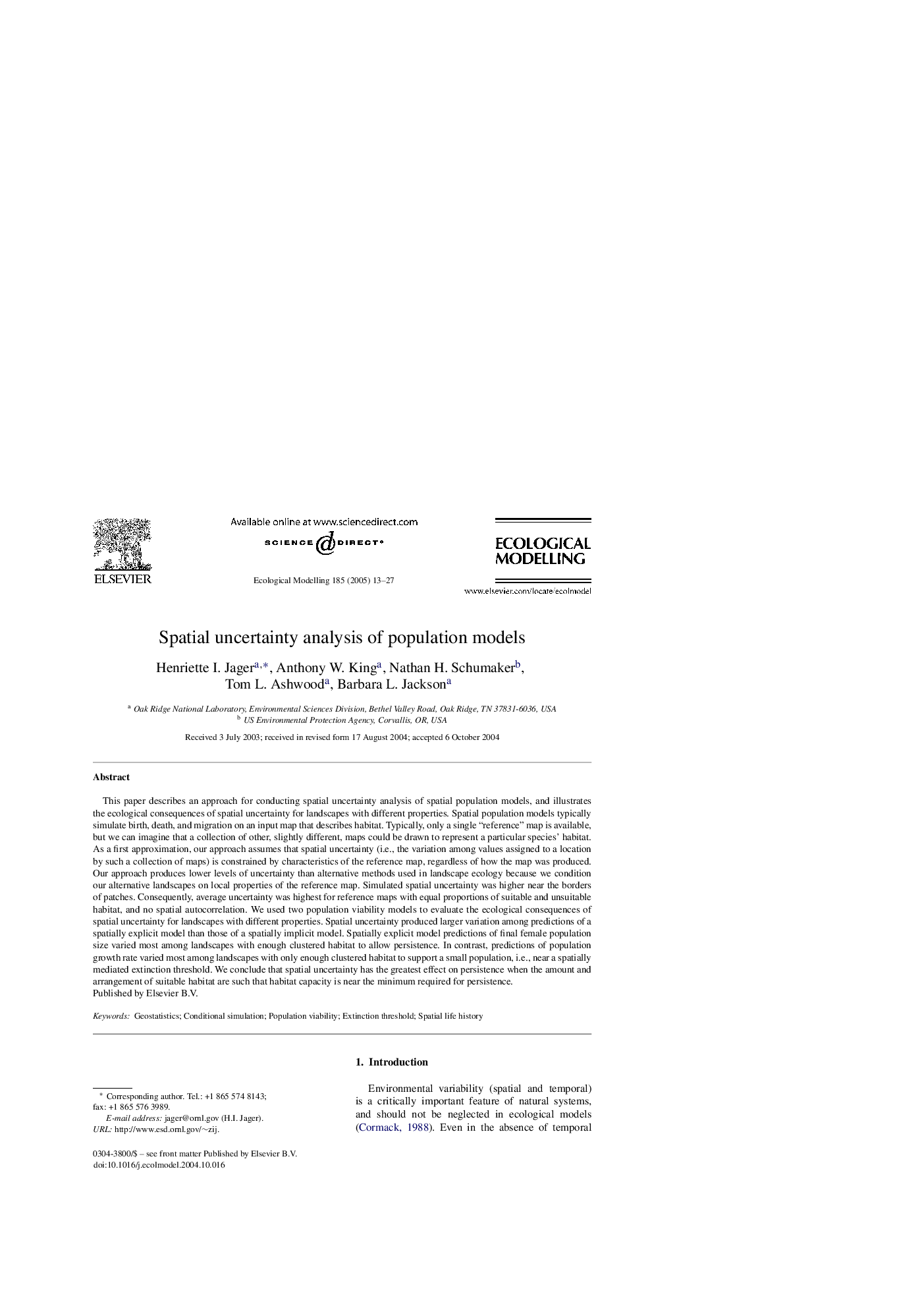| کد مقاله | کد نشریه | سال انتشار | مقاله انگلیسی | نسخه تمام متن |
|---|---|---|---|---|
| 9443596 | 1303540 | 2005 | 15 صفحه PDF | دانلود رایگان |
عنوان انگلیسی مقاله ISI
Spatial uncertainty analysis of population models
دانلود مقاله + سفارش ترجمه
دانلود مقاله ISI انگلیسی
رایگان برای ایرانیان
کلمات کلیدی
موضوعات مرتبط
علوم زیستی و بیوفناوری
علوم کشاورزی و بیولوژیک
بوم شناسی، تکامل، رفتار و سامانه شناسی
پیش نمایش صفحه اول مقاله

چکیده انگلیسی
This paper describes an approach for conducting spatial uncertainty analysis of spatial population models, and illustrates the ecological consequences of spatial uncertainty for landscapes with different properties. Spatial population models typically simulate birth, death, and migration on an input map that describes habitat. Typically, only a single “reference” map is available, but we can imagine that a collection of other, slightly different, maps could be drawn to represent a particular species' habitat. As a first approximation, our approach assumes that spatial uncertainty (i.e., the variation among values assigned to a location by such a collection of maps) is constrained by characteristics of the reference map, regardless of how the map was produced. Our approach produces lower levels of uncertainty than alternative methods used in landscape ecology because we condition our alternative landscapes on local properties of the reference map. Simulated spatial uncertainty was higher near the borders of patches. Consequently, average uncertainty was highest for reference maps with equal proportions of suitable and unsuitable habitat, and no spatial autocorrelation. We used two population viability models to evaluate the ecological consequences of spatial uncertainty for landscapes with different properties. Spatial uncertainty produced larger variation among predictions of a spatially explicit model than those of a spatially implicit model. Spatially explicit model predictions of final female population size varied most among landscapes with enough clustered habitat to allow persistence. In contrast, predictions of population growth rate varied most among landscapes with only enough clustered habitat to support a small population, i.e., near a spatially mediated extinction threshold. We conclude that spatial uncertainty has the greatest effect on persistence when the amount and arrangement of suitable habitat are such that habitat capacity is near the minimum required for persistence.
ناشر
Database: Elsevier - ScienceDirect (ساینس دایرکت)
Journal: Ecological Modelling - Volume 185, Issue 1, 10 June 2005, Pages 13-27
Journal: Ecological Modelling - Volume 185, Issue 1, 10 June 2005, Pages 13-27
نویسندگان
Henriette I. Jager, Anthony W. King, Nathan H. Schumaker, Tom L. Ashwood, Barbara L. Jackson,